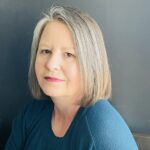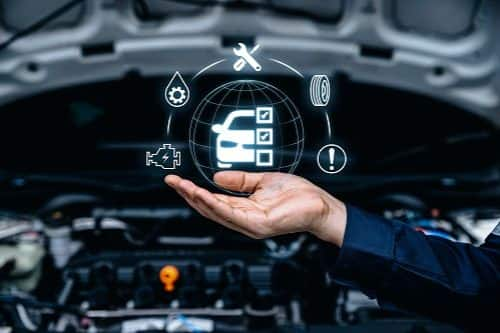- Cheapest non-owner car insurance companies in Oregon
- Best non-owner car insurance in Oregon
- Insurance.com's top choices for non-owner car insurance
- Average cost of non-owner car insurance in Oregon
- Non-owner car insurance in Oregon by age and gender
- Non-owner vs. traditional car insurance
- What does Oregon non-owner car insurance cover?
- The bottom line: Non-owner car insurance in Oregon
- Methodology
- Compare Oregon non-owners car insurance rates with other states
Cheapest non-owner car insurance companies in Oregon
Oregon Mutual Insurance offers the most affordable non-owner car insurance in Oregon, with rates averaging $27. The second cheapest Oregon non-owner insurer is State Farm. Average rates are $286.
Compare the cheapest non-owner car insurance companies in Oregon below.
| Company | Average annual premium | Average monthly premium |
|---|---|---|
| Oregon Mutual Insurance | $27 | $2 |
| State Farm | $286 | $24 |
| Country Financial | $318 | $27 |
| Travelers | $389 | $32 |
| Progressive | $643 | $54 |
| GEICO | $683 | $57 |
| Farmers | $746 | $62 |
| Nationwide | $805 | $67 |
| USAA | $211 | $18 |
Best non-owner car insurance in Oregon
Although Country Financial came out on top, State Farm and Travelers are also excellent choices for providing non-owner coverage.
To find the best non-owner car insurance companies in Oregon, we looked at several factors, including how many complaints each company receives, financial stability and average rates. We used rate data from Quadrant Information Services as well as third-party ratings from J.D. Power, AM Best and the National Association of Insurance Commissioners.
The table below compares the top non-owner car insurance companies in Oregon.
| Company | Average annual premium | J.D. Power | NAIC | AM Best | Overall score |
|---|---|---|---|---|---|
| Country Financial | $318 | 828 | 0.34 | A+ | 3.56 |
| State Farm | $286 | 821 | 0.70 | A++ | 3.31 |
| Travelers | $389 | 810 | 0.49 | A++ | 3.26 |
| Progressive | $643 | 807 | 0.65 | A+ | 2.71 |
| GEICO | $683 | 797 | 0.91 | A++ | 2.70 |
| Nationwide | $805 | 810 | 0.64 | A+ | 2.52 |
| Farmers | $746 | 796 | 0.80 | A | 2.44 |
Insurance.com's top choices for non-owner car insurance
Take a closer look at our top picks for non-owner car insurance in Oregon.
Country Financial
Country Financial is our top choice for non-owner car insurance in Oregon. Its average annual non-owner car insurance cost is $318. Country Financial has an AM Best score of A+ and a low NAIC complaint ratio of 0.34.
State Farm
Another excellent choice for non-owner car insurance in Oregon is State Farm. Average rates are $286 annually. State Farm has an AM Best rating of A++ and an NAIC complaint ratio of 0.7.
Travelers
Our third pick is Travelers. Travelers rates average $389. Its NAIC complaint ratio is 0.49, and it has a rating of A++.
PEOPLE ASK:
Do I need Oregon non-owner car insurance to drive a friend's car?
Probably not, unless you use the car a lot. If you only drive your friend's car occasionally, their insurance usually covers it under something called permissive use-as long as it's less than 12 times a year. Still, it's a good idea to check with your friend's insurance company just to be sure.
Average cost of non-owner car insurance in Oregon
Non-owners car insurance in Oregon costs $441. However, the rates may differ based on factors such as your driving record, age and coverage level.
Non-owner car insurance in Oregon by age and gender
Whether you're looking for non-owner or standard car insurance, age and gender affect your rates in Oregon.
Age is one of the most important factors that impacts car insurance rates. Younger drivers lack experience and are more likely to be in accidents. That means car insurance companies charge higher rates to offset claims.
Gender also plays a part in determining car insurance rates in most states. Males tend to be riskier drivers and have more injuries, leading to higher premiums.
Below are the average Oregon rates for non-owner car insurance based on age and gender.
| Age group | Female | Male |
|---|---|---|
| Teens (16-19) | $784 | $762 |
| Young Adults (20-24) | $563 | $572 |
| Adults (25-60) | $427 | $454 |
| Seniors (65-75) | $451 | $460 |
Non-owner vs. traditional car insurance
Non-owner car insurance costs less than standard car insurance because it provides minimal coverage. It only includes liability coverage, while standard auto insurance offers many additional types of coverage.
For example, non-owner car insurance in Oregon doesn't cover damage to the car you're driving or your injuries. Standard car insurance may include collision and comprehensive coverage to help pay for car repairs.
Furthermore, because insurance companies anticipate that people who don't own a car will drive less frequently, and because non-owner car insurance is secondary to the owner's policy, the risk of a claimAn insurance claim is a request you make to your insurance company for coverage after your car is damaged or you have an accident. You can file a claim online, by phone, or in writing. is much lower.
The table below compares average annual rates for non-owner and owner car insurance.
| Non-owners state minimum policy | $441 |
| Traditional state minimum policy | $641 |
| State minimum car insurance limits | 25/50/20 |
What does Oregon non-owner car insurance cover?
A Oregon non-owner car insurance policy only provides the legally required coverage to be on the road. It includes all Oregon minimum car insurance requirements. It doesn't cover any damage to the vehicle itself.
Non-owner car insurance is secondary, which means it will only apply after the car owner's policy limits are exceeded.
The bottom line: Non-owner car insurance in Oregon
Oregon drivers may need non-owner car insurance for various reasons, such as renting or borrowing a car. However, this type of coverage typically only offers liability coverage to pay for property damage or bodily injuries you cause to others. Coverage does not extend to you or the vehicle you're driving.
Non-owner car insurance in Oregon costs an average of $441, with Oregon Mutual Insurance offering the lowest rates. Our analysis found that Country Financial is the best overall choice. Keep in mind that your age, gender and driving record play a significant role in determining your insurance rates.
Take the time to compare options to find the best non-owner car insurance in Oregon. Use the tool above to easily compare non-owner insurance providers near you.
Methodology
Insurance.com analyzed non-owner car insurance companies in 2023 to find the cheapest and the best overall based on rates and third-party ratings.
Non-owner car insurance rates were fielded by Quadrant Data Services for a sample policy based on a 40-year-old driver with a clean record and good credit for a state minimum liability policy. These rates were one of the factors used to rank the best companies.
For additional data points in the ranking, customer complaints ratios were pulled from the National Association of Insurance Commissioners (NAIC) complaints database, where a score of 1.00 is considered the baseline and anything below is a low complaint volume while anything above is considered a high volume. Overall customer satisfaction ratings were drawn from J.D. Power's U.S. Auto Insurance Study, where companies are scored out of 1,000. Finally, AM Best financial ratings were used to indicate financial stability, where the best possible score is A++.
Compare Oregon non-owners car insurance rates with other states
 You might also be interested in
You might also be interested in- Oregon car insurance laws and requirements: What is changing in 2025
- Oregon DUII and insurance: How much does a DUII raise your insurance?
- Speeding ticket calculator in Oregon
- SR-22 insurance in Oregon
- Oregon gap insurance: Everything you need to know
- Low-income car insurance in Oregon: What you need to know
- Oregon car insurance guide
- Oregon car insurance coverage calculator
- Cheapest car insurance for high-risk drivers in Oregon
- Cheapest home and auto insurance bundle in Oregon





